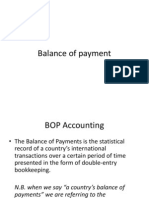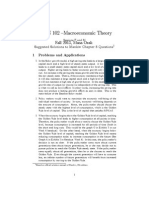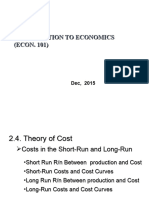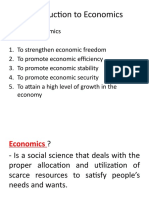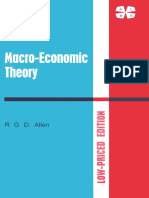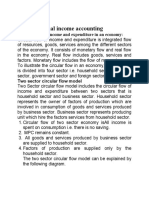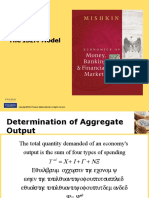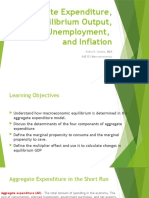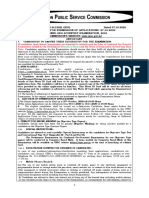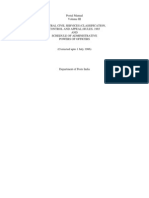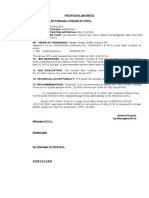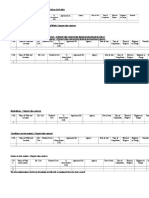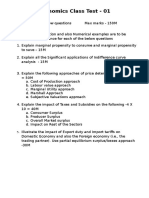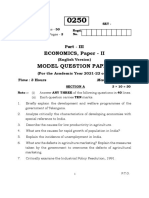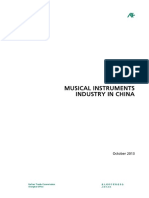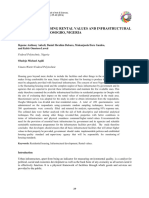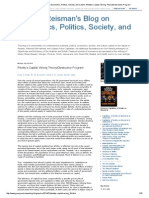Lecture 7:
History and Causes of Growth
September 22, 2015
Prof. Wyatt Brooks
�Causes of Growth
Before: Looked at special cases and tried to
qualitatively understand causes of growth
Now evaluate causes of growth quantitatively
Motivating question: How important is history?
That is, if a country has always been poor, are they at a
disadvantage relative to one that has been rich?
�Solow Growth Model
Robert Solow
Macroeconomist
Professor at MIT
Nobel Prize (1987)
Important Contributions:
Developed a macroeconomic
model that allows for a
decomposition of GDP into
factors of production (capital,
labor, productivity)
Showed that capital
accumulation is relatively
unimportant for growth
Contrasts with the thinking of
the majority of economists
before (Smith, Marx, etc.)
�Macroeconomic Models
Models: A theoretical construct designed to represent a
complex system.
Economists use these models to predict the effects of
policy, such as:
If taxes are raised, what will happen to
unemployment?
Who will gain and lose from a free trade
agreement?
What happens to unemployment if the Federal
Reserve increases the supply of money in the
economy?
What policies can increase growth in developing
countries?
�Key Features of a Macroeconomic Model
Consumers: Represent households who supply
labor, make investments and consume
Firms: Represent all businesses who use factors of
production (labor, capital, land, etc.) to produce
output
Equilibrium: The outcome of the model.
A prediction about how firms and consumers interact
through markets
�Solow Growth Model
Observation: Richer countries have more capital
(more machines, factories, etc.)
Is this the cause or the result of their greater income?
Two possibilities considered:
Countries have more capital because they save a
greater part of their income
Countries have more capital because the return on
investing in capital is higher
The whole model is beyond the scope of this class, so
we will consider a greatly simplified version
�Simplified Solow Growth Model
Consumers:
Consume a constant fraction of GDP and own
all the capital in the economy
Not modeling:
Unemployment (everyone always works)
Lifecycle (no children, students or retirees)
Within-country income inequality
Consumers described by one equation:
I=sY
where s, a number between 0 and 1, is the
fraction of output that gets invested.
�Simplified Solow Growth Model
Firms:
Use the capital to produce output
Not modeling:
Labor markets (searching for workers)
Finance (borrowing to take on projects)
Executive compensation
Firms described by one equation:
Y = A K0.3
where Y is GDP, A is productivity
and K is the capital stock
�Simplified Solow Growth Model
Equilibrium:
All output is used either in investment or
consumption (no trade, no government):
Y=C+I
How the stock of capital changes over time:
K = I + (1- )K
where K is the capital stock next year,
K is the capital stock this year,
I is investment this year, and
is the depreciation rate
�Simplified Solow Growth Model
So the entire model is described by four
equations:
Households:
Firms:
Capital Accumulation:
GDP:
I=sY
Y = A K0.3
K = I + (1- )K
Y=C+I
Rearranging terms:
I = s Y = s A K0.3
K = I + (1- )K = s A K0.3 + (1- )K
�How does the capital stock
change over time?
K
How are capital this year, and
capital next year related?
K= K
�How does the capital stock
change over time?
K
K = s A K0.3 + (1- )K
K= K
The equation above tells you
how much capital there will be
next year
�How does the capital stock
change over time?
K
K = s A K0.3 + (1- )K
Suppose the economy starts
with some low capital level K0
K= K
K0
�How does the capital stock
change over time?
K
K = s A K0.3 + (1- )K
K1
K= K
K0
Then the equation says that
next years capital stock will
be K1
�How does the capital stock
change over time?
K
K = s A K0.3 + (1- )K
K1
K= K
K0
K1
Using the red 45 degree line
as a reference, we can find
K1 on the horizontal axis.
�How does the capital stock
change over time?
K
K = s A K0.3 + (1- )K
K2
Then we can find K2
K1
K= K
K0
K1
�How does the capital stock
change over time?
K
K = s A K0.3 + (1- )K
K2
K1
K= K
K0
K1
Repeating these steps, we
can find the capital stock in
any future year
�How does the capital stock
change over time?
K
K = s A K0.3 + (1- )K
K2
Repeating these steps, we
can find the capital stock in
any future year
K1
K= K
K0
K1
K2
�How does the capital stock
change over time?
K
K = s A K0.3 + (1- )K
K3
K2
Repeating these steps, we
can find the capital stock in
any future year
K1
K= K
K0
K1
K2
�How does the capital stock
change over time?
K
K = s A K0.3 + (1- )K
K3
K2
Repeating these steps, we
can find the capital stock in
any future year
K1
K= K
K0
K1
K2 K3
�How does the capital stock
change over time?
K
K = s A K0.3 + (1- )K
K4
K3
K2
Repeating these steps, we
can find the capital stock in
any future year
K1
K= K
K0
K1
K2 K3
�How does the capital stock
change over time?
K
K10
.
K3
K2
K = s A K0.3 + (1- )K
Notice that the capital stock
is approaching the point
where the two lines meet
K1
K= K
K0
K1
K2 . K10
�How does the capital stock
change over time?
K
K*
K = s A K0.3 + (1- )K
The point where the two
lines meet is the steady
state level of capital. Once
the economy is at this level,
the capital level does not
change.
K= K
K*
�Some Things to Notice
The further the economy starts below the steady
state level of capital, the faster the economy
initially grows
Mankiw refers to this as the catch-up effect
This is due to the effect of diminishing returns
The amount of extra output from each
additional unit of capital goes down as the
capital stock gets larger
Growth slows over time until the capital stock
reaches the steady state level
�Savings and Productivity
What happens if the savings rate of the country
changes?
Increase s from its initial level to a higher level
�Increase in the Savings Rate
K
K*
K = s A K0.3 + (1- )K
Suppose the economy is in
a steady state with savings
rate s.
K= K
K*
�Increase in the Savings Rate
K
K = s A K0.3 + (1- )K
K*
Then the savings rate
increases to s.
K= K
K*
�Increase in the Savings Rate
K
K = s A K0.3 + (1- )K
K1
Now capital accumulates
according to the new
equation with the higher
savings rate
K= K
K*
�Increase in the Savings Rate
K
K = s A K0.3 + (1- )K
K1
And we proceed
exactly like before.
K= K
K*
�Increase in the Savings Rate
K
K = s A K0.3 + (1- )K
K*
K0
Eventually a new,
higher steady state
capital stock is
reached.
K= K
K0
K*
�Savings and Productivity
What happens if instead productivity is
increased?
Same thing.
Income goes up, so consumers have more to
invest, which increases the capital stock.
How are they different?
Higher savings: Decreases consumption
today, increases it (maybe) in the future
Higher productivity: Increases consumption
both today and in the future
�120000
100000
GDP per Capita
80000
60000
40000
20000
0
-20
-10
10
20
30
Savings Rate
40
50
60
70
�Savings and Productivity
Back to what Solow found:
Savings rates (even historical) have little
relationship to relative wealth
Apparently the wealth of countries that are
now rich is not because of long term savings
and investment per se
That is, clearly the fact that rich countries are
rich is partly because they have more
capital. BUT they have more capital because
they have high productivity.
�Savings and Productivity
This is an extremely important finding.
Suggests that a long history of capital
accumulation is not necessary to be wealthy
If a country is able to increase its productivity,
capital will catch up quite quickly
This shifted the emphasis in the study of
promoting development in low income countries
away from trying to send them capital, and toward
trying to make their economies more efficient
How do you do that?
Perhaps the most important open question in
economics.
�More Direct: Growth Accounting
Now take the basic Solow model and extend it to
include labor and human capital
Decompose changes in GDP per capita using this
production function:
Y = A K1/3H2/3
Here, H is human capital: h x L
h is average human capital
L is the number of workers
N is total population
1.5
=
0.5
�Sources of Growth?
Growth through savings:
Increases in GDP driven by higher K/Y
Growth through productivity:
Increases in GDP driven by higher A
K/Y is roughly constant (as in Solow)
Other possibilities:
Labor: L/N
Human capital: h
�USA Growth Accounting
400
200
Y/N
K/Y^(1/2)
h
L/N
100
50
1950
A^(3/2)
1960
1970
1980
1990
2000
2010
�China Growth Accounting
3200
1600
800
Y/N
K/Y^(1/2)
400
h
L/N
200
A^(3/2)
100
50
1950
1960
1970
1980
1990
2000
2010
�South Korea Growth Accounting
3200
1600
800
Y/N
K/Y^(1/2)
400
h
L/N
200
A^(3/2)
100
50
1960
1970
1980
1990
2000
2010
�Argentina Growth Accounting
400
200
Y/N
K/Y^(1/2)
h
L/N
100
50
1950
A^(3/2)
1960
1970
1980
1990
2000
2010
�Zimbabwe Growth Accounting
400
200
Y/N
K/Y^(1/2)
100
h
L/N
A^(3/2)
50
25
1960
1970
1980
1990
2000
2010
�Findings
In growing countries, growth is not driven by K/Y,
its driven by A
In non-growing countries, big fluctuations in all of
the factors
Why does A go up in growing countries?
Look to histories
Improvements in technology
Improvements in institutions



